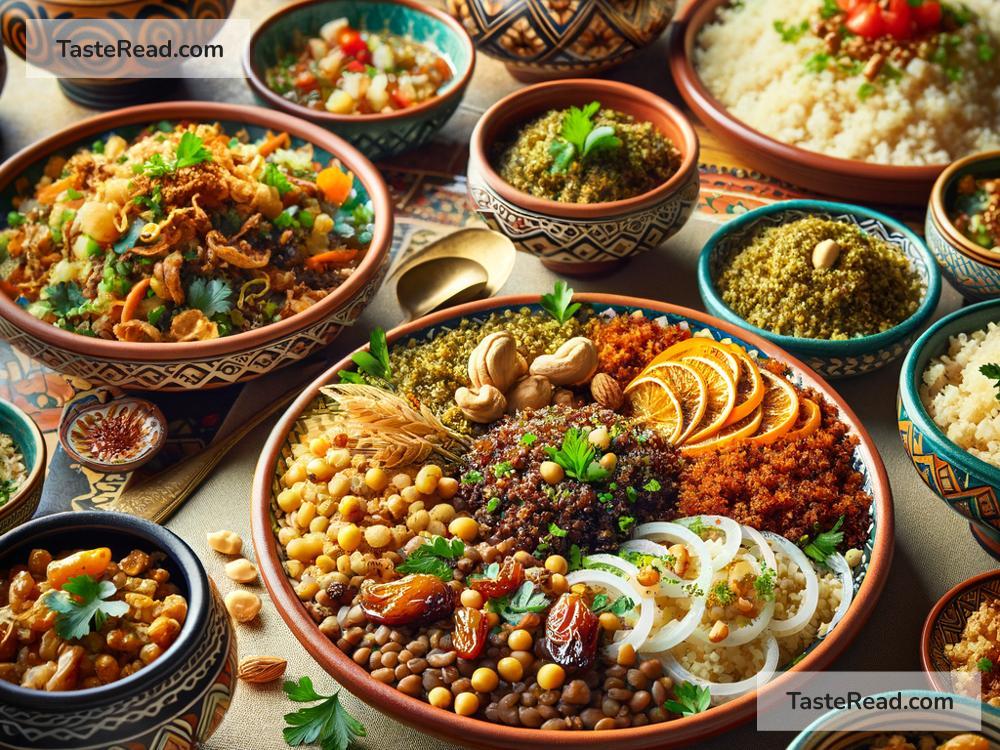Exploring Nutty, Grain-Based Dishes from the Middle East
Middle Eastern cuisine is famous for its rich flavors, vibrant spices, and wholesome ingredients. Among its many treasures are dishes made with grains like rice, bulgur, freekeh, and couscous, often paired with nuts such as almonds, pistachios, walnuts, and pine nuts. These nutty, grain-based dishes are not only delicious but also packed with nutrition and history. Let’s take a closer look at some of these unique dishes, their ingredients, and the stories behind them.
Why Are Grains and Nuts So Popular in the Middle East?
Grains are a staple food in the Middle East, where they’ve been cultivated for thousands of years. They are affordable, nutritious, and versatile, serving as the base for countless dishes. Nuts, on the other hand, provide flavor, crunch, and a source of healthy fats, making them a perfect pairing with grains. Together, they form dishes that are satisfying, hearty, and full of flavor.
Middle Eastern cuisine also celebrates hospitality, using nuts and grains in large, sharable dishes that bring people together around the table. Many of these recipes have been passed down through generations, connecting families to their cultural roots.
Famous Nutty, Grain-Based Dishes from the Middle East
1. Kibbeh
Kibbeh is a traditional dish popular in places like Lebanon, Syria, and Palestine. It starts with bulgur wheat, a whole grain that is soaked and mixed with minced meat, usually lamb or beef. Spices like cinnamon, allspice, and cumin give kibbeh its signature flavor.
In some variations, kibbeh is stuffed with pine nuts, adding a nutty crunch inside. It can be shaped into patties, fried, baked, or even made into a casserole. Kibbeh is not only a satisfying meal but also a symbol of Middle Eastern comfort food.
2. Maqluba
Maqluba, which means “upside-down” in Arabic, is one of the most popular rice dishes in the Middle East. This layered dish often includes rice, eggplants, potatoes, meat, and spices. To make Maqluba, everything is cooked together in one pot, then flipped upside-down on a serving platter.
Nuts like almonds or pine nuts are often toasted and sprinkled on top of Maqluba for added texture and flavor. It’s a family favorite and often served at big gatherings or celebrations.
3. Freekeh with Chicken
Freekeh is an ancient grain made from young, green wheat that is roasted and cracked. It has a smoky, nutty flavor that makes it stand out. Freekeh is often paired with chicken, vegetables, and spices like cardamom and cinnamon.
To take this dish to the next level, cooks may sprinkle toasted almonds or pistachios on top. Freekeh is high in protein and fiber, making it a healthy choice for anyone who enjoys Middle Eastern food.
4. Couscous with Raisins and Nuts
Couscous, a tiny pasta often mistaken for a grain, is widely used in Middle Eastern and North African cuisine. It’s steamed until tender and fluffy, then combined with spices, sweet raisins, and nuts like almonds or pistachios.
This dish is both savory and sweet, often served as part of a festive meal or during special holidays. The nuts and raisins add bursts of texture and sweetness, making it a delightful treat.
5. Baklava
While not a grain-based dish in the traditional sense, baklava is a dessert that uses layers of phyllo dough, which is made from flour—a grain product. This popular sweet treat features layers of thin pastry filled with chopped nuts (walnuts or pistachios) and soaked in sugary syrup or honey.
Baklava is famous around the world, and every region has its own twist on the recipe. It’s served during celebrations, holidays, and family gatherings. Its nutty, flaky layers make it irresistible.
6. Stuffed Grape Leaves (Dolma)
In Middle Eastern cuisine, stuffed grape leaves are often filled with rice, herbs, and a generous amount of spices, sometimes including pine nuts for a richer flavor. These small rolls are packed with taste and are perfect as an appetizer or part of a larger meal.
Dolma showcases the balance between grains and nuts in Middle Eastern cooking, proving that simple ingredients can create gourmet results.
What Makes These Dishes Special?
Nutty, grain-based dishes from the Middle East aren’t just meals—they’re an experience. They tell stories of ancient agriculture, trade routes that brought spices and nuts across borders, and family traditions that have lasted for centuries. They highlight the creativity of Middle Eastern cooks, who use humble ingredients to create dishes with unforgettable flavor.
From the smoky taste of toasted nuts to the hearty texture of grains, these dishes bring a sense of warmth and togetherness to the table. They’re beloved not only for their taste but also for their ability to connect cultures and generations.
Try Cooking These Dishes at Home
If you’ve never tried Middle Eastern nutty, grain-based dishes, you’re missing out! The good news is that many of these dishes are easy to make at home. You can find ingredients like bulgur, freekeh, and pine nuts at international grocery stores or online.
Start simple with Maqluba or freekeh with chicken, and experiment with adding your favorite nuts and spices. Or, if you want to try your hand at dessert, baklava is a rewarding challenge that’s worth the effort.
Middle Eastern cuisine offers more than just food—it’s an invitation to explore a culture full of history, tradition, and love for sharing meals. Next time you want to try something new, dive into the world of nutty, grain-based dishes from the Middle East. You’ll discover flavors and textures that will make your taste buds dance!


